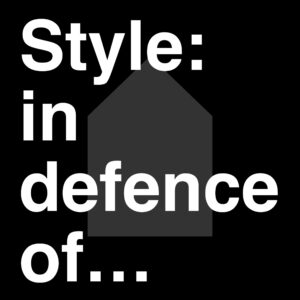Style: in defence of…
In a series of talks held at the Sir John Soane’s Museum, authors of our essays argue for their selected style.
See all the accompanying essays here

In a series of talks held at the Sir John Soane’s Museum, authors of our essays argue for their selected style.
See all the accompanying essays here
When they were documenting Metabolism for their book, Rem Koolhaas and Hans Ulrich Obrist described it as “the first non-Western avant-garde movement in architecture.” Others have pointed to it as the vital pre-condition for contemporary architecture. Academic Penny Lewis ingeniously asserts the importance of a short-lived architectural movement and shows what can happen when human creativity and investment coincide.
Architect Amin Taha believes that style is over. Finished. Kaput. In this brilliant essay, he says that whilst it is still just about tenable that style can be an identifiable “look”, as a device for critical engagement, style as a meaningful unity, standing alone and yet representing many, is undoubtedly a thing of the past. Not only is style unimportant but it is actually intolerant, he says. Taha’s profound essay is an extended plea that “no-style” be the new temper of our times.
Brutalism, says Barnabas Calder, author of Raw Concrete: The Beauty of Brutalism, is hard to define, but easy to recognise. In this considered essay, he argues that whilst exposed concrete is now the key identifier for most of Brutalism’s fans, it is the structural potential of concrete that excited architects most at the time. However, Calder says understanding how it emerged from cheap energy sources in the mid 20th Century will help us adapt its example today.
The great architects and designers of the Arts and Crafts movement dared to imagine how things might be different, says Annie Warburton, former Creative Director at the Crafts Council. In this sensitive, insightful essay, she argues that the movement is still a vital model for creative endeavour because its adherents such as William Morris sought an “embodiment” and “form” to their dreams.